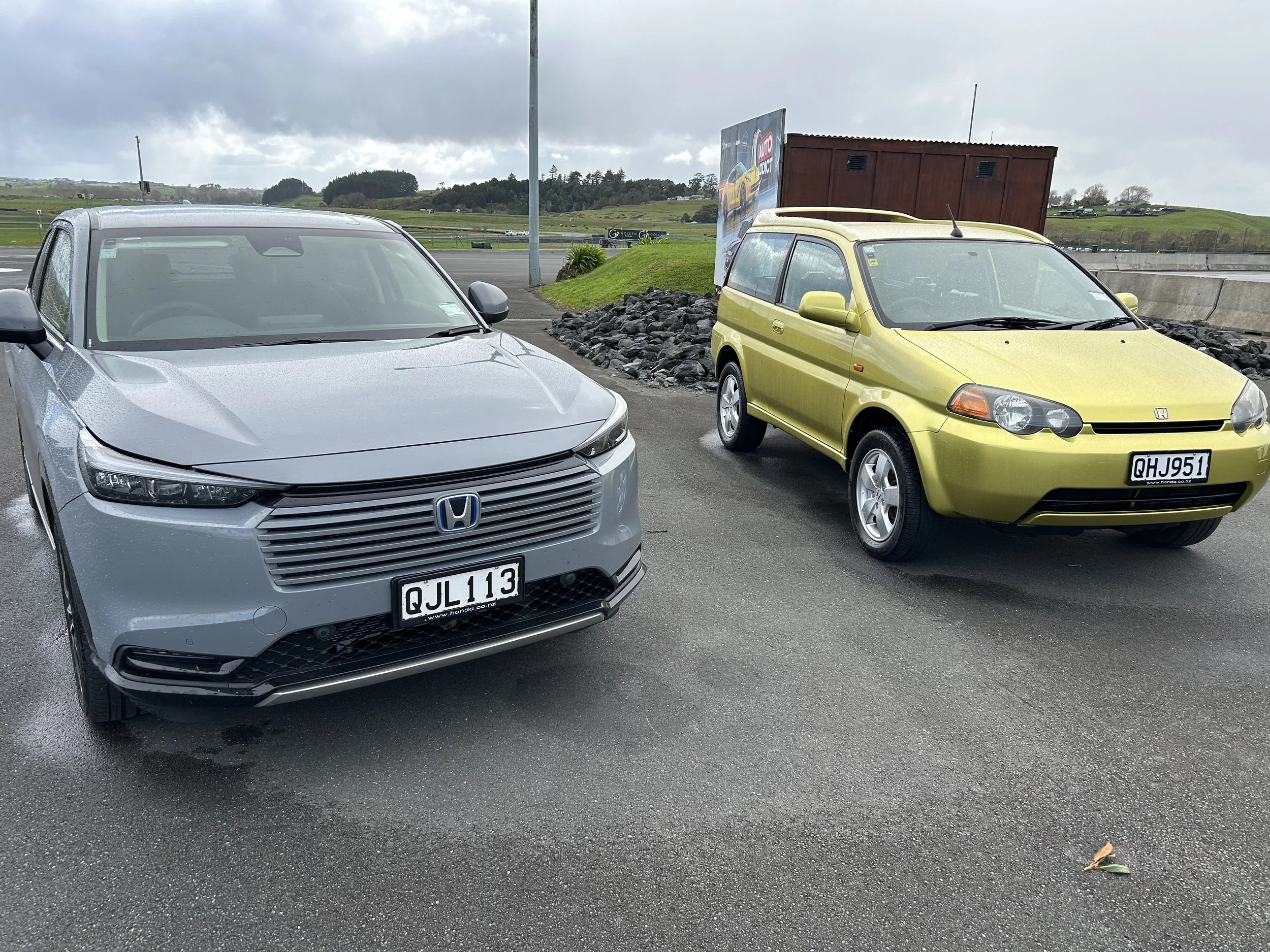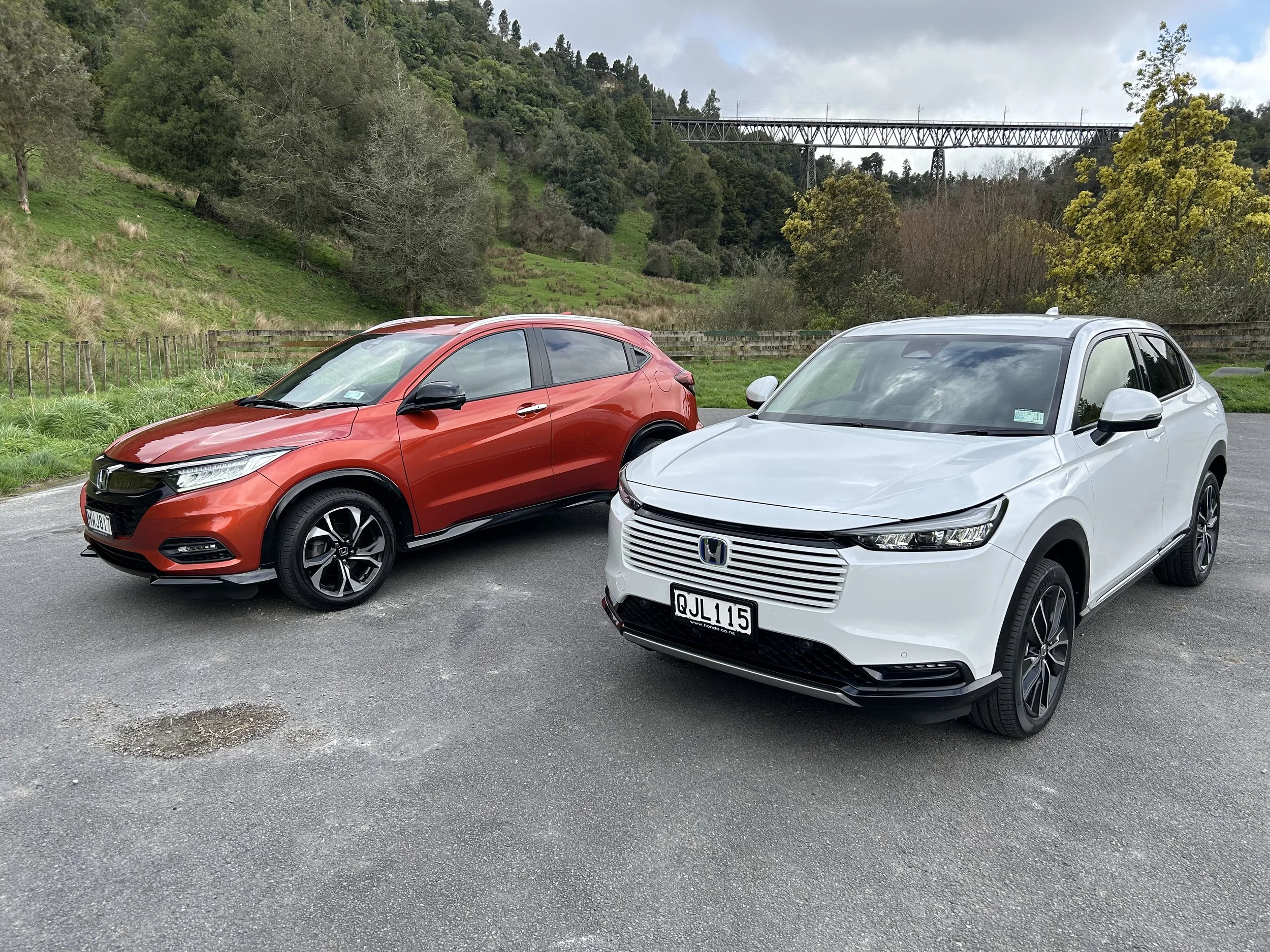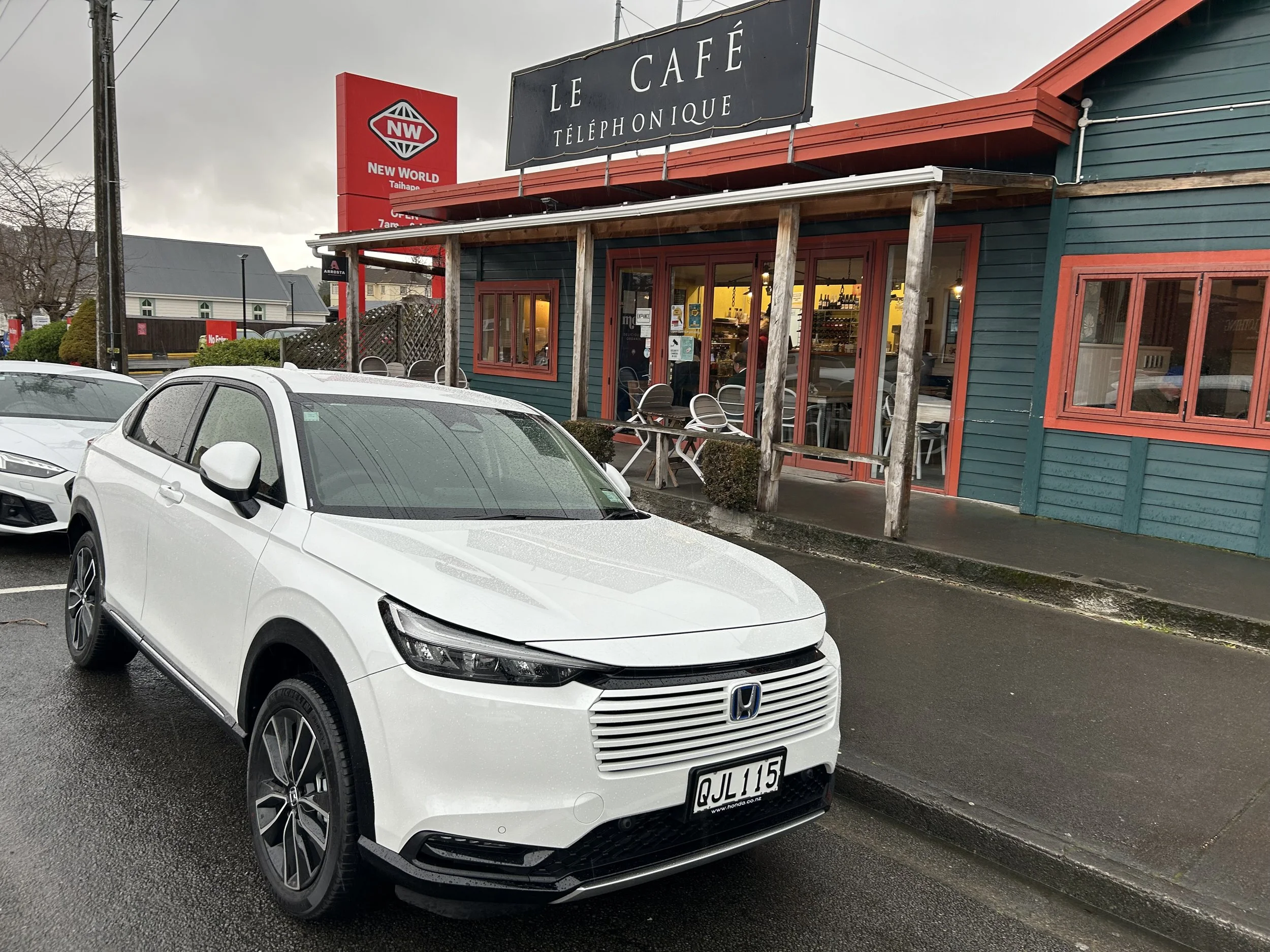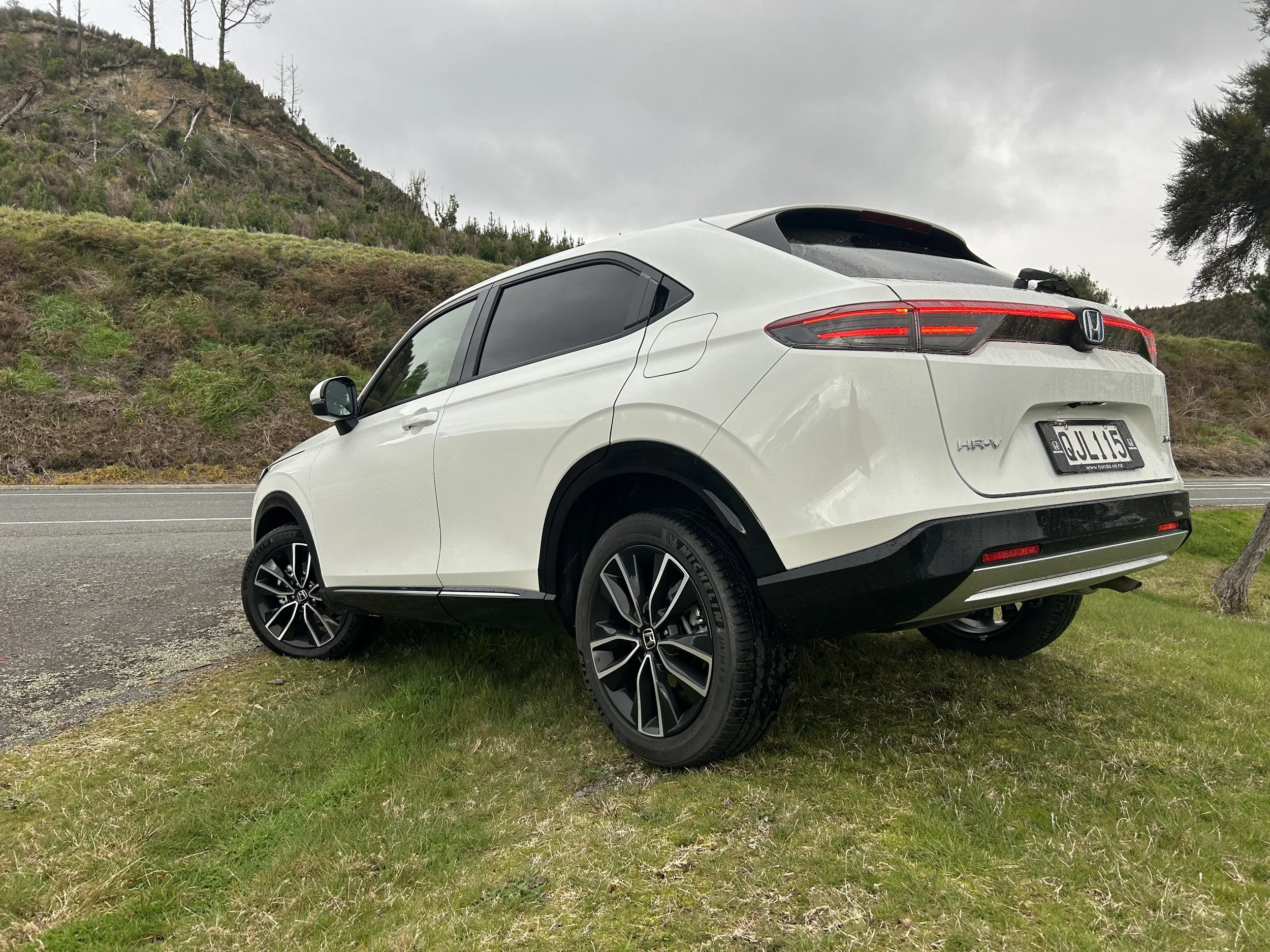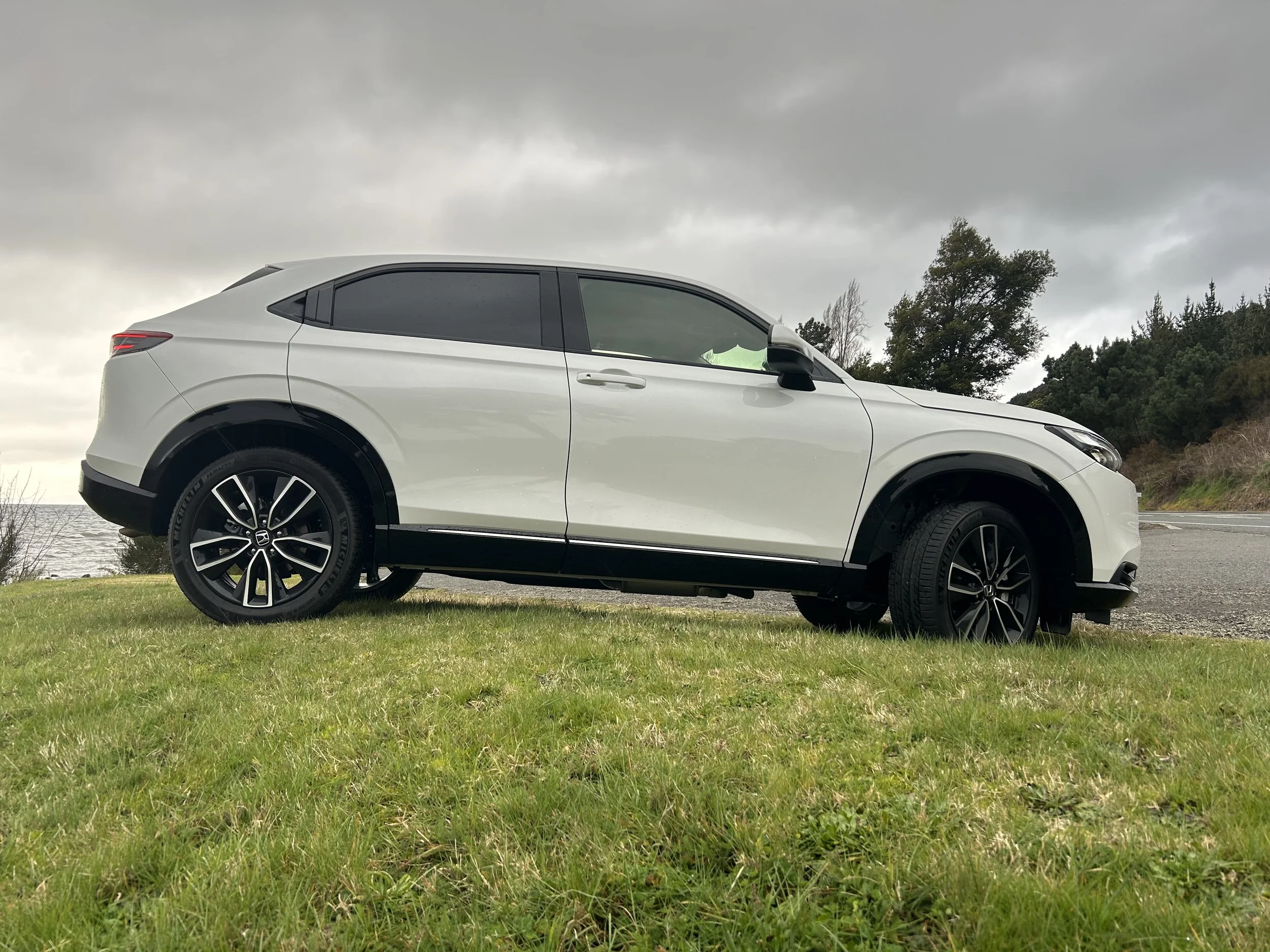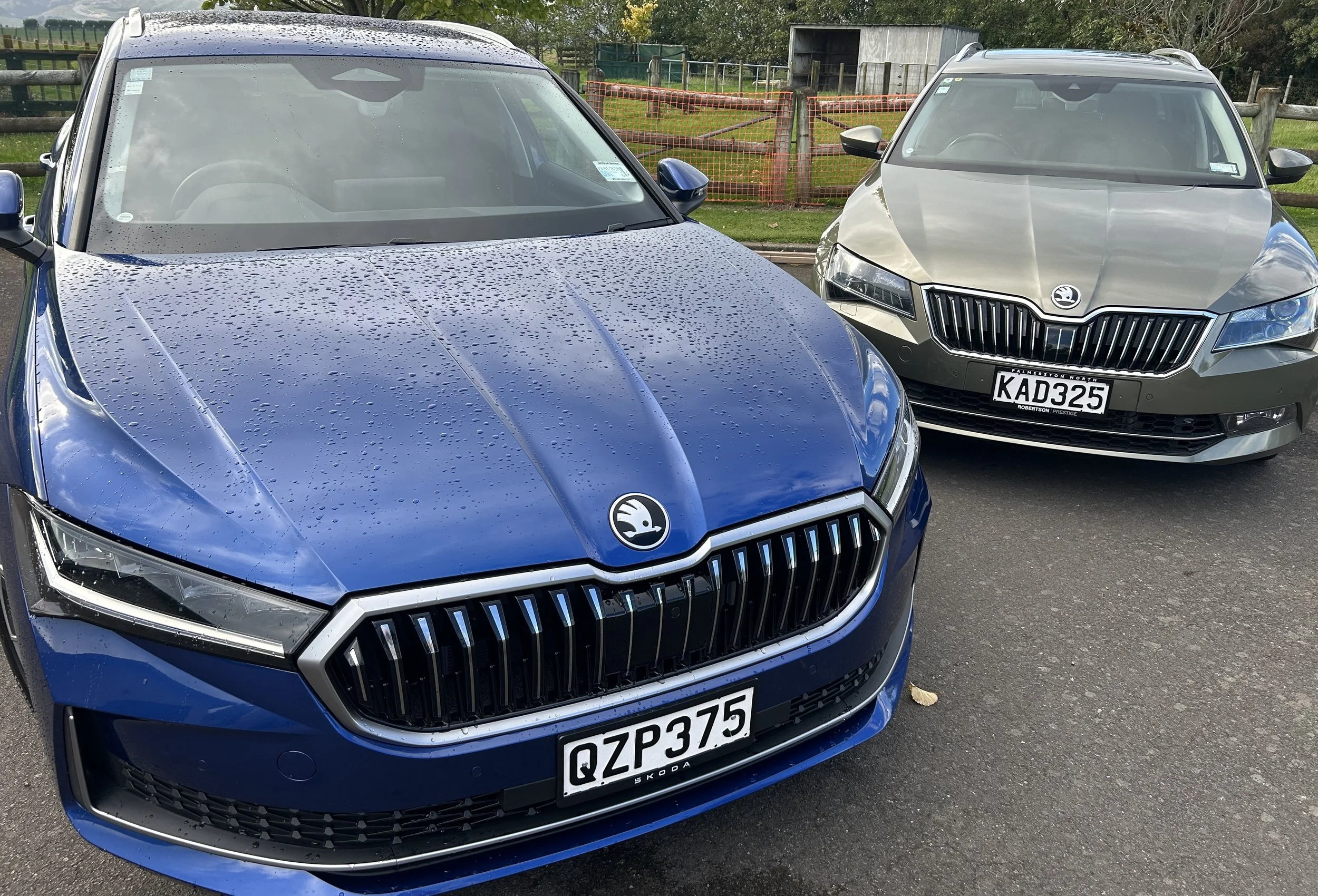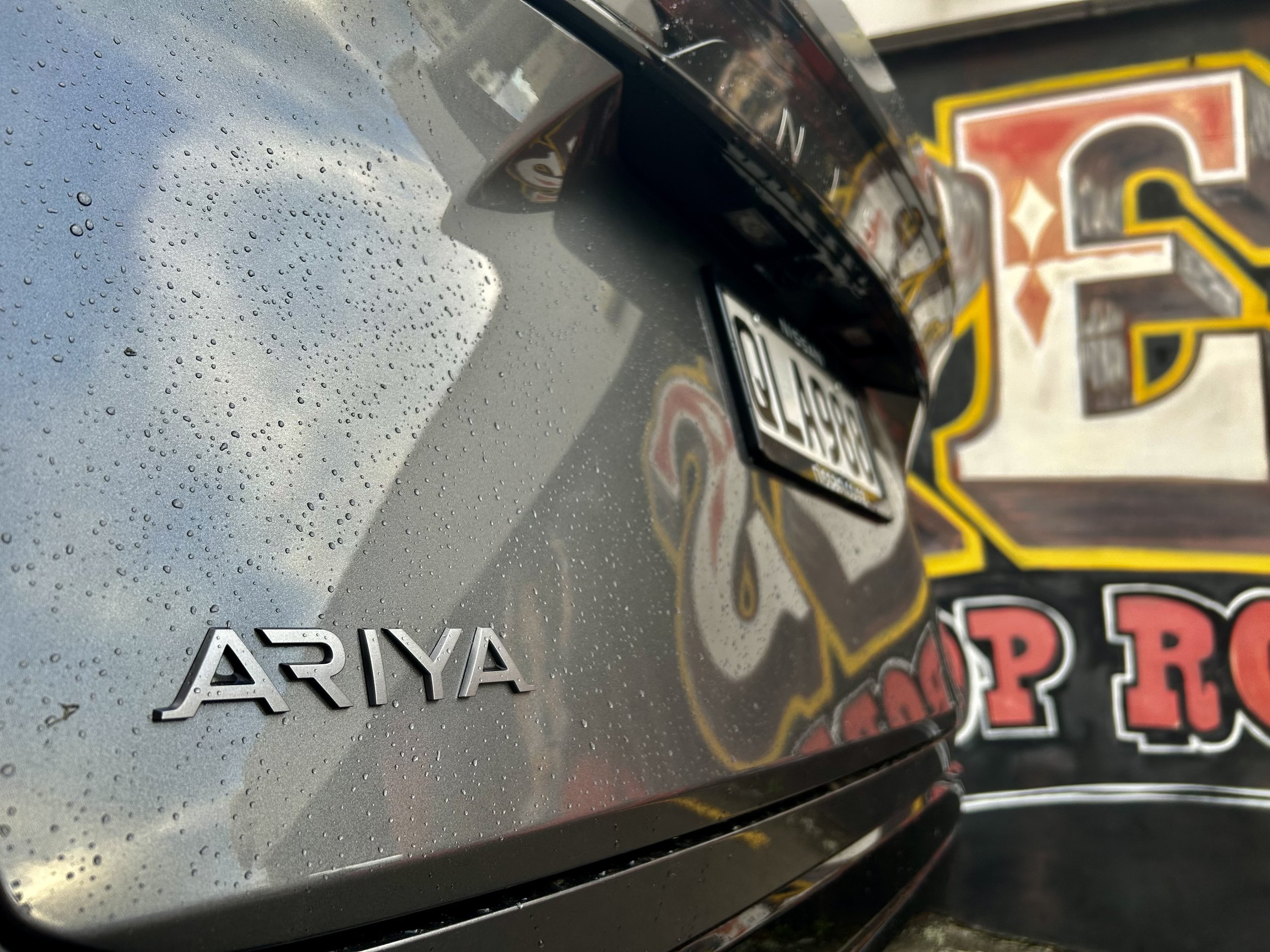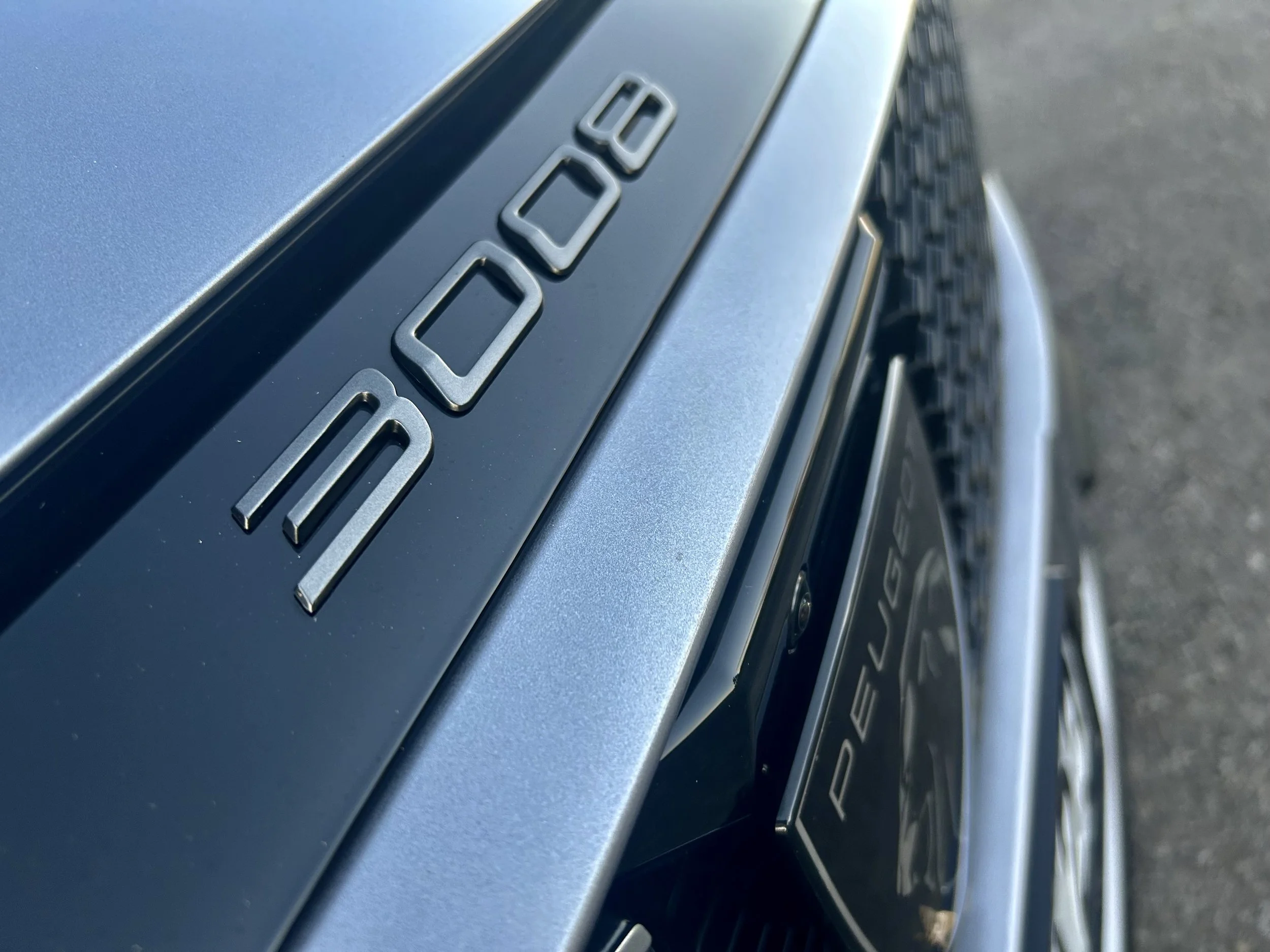Honda HR-V first drive: Little tike takes a big adventure
/The launch for the latest edition of this make’s smallest crossover delivered a clean break from its supposed comfort zone.
ARRIVAL of the latest edition of Honda’s smallest and cheapest crossover reminds that ‘same-same’ isn’t always an ethos for this make.
The distributor gathering all three generations together for this moment highlighted the nameplate’s strange history.
A Jazz might always be a Jazz; but the HR-V - on the same platform as that brand stalwart hatchback (in this and previous form; the first was related to the Jazz preceding Logo) - has been markedly different in every serving. Would anyone unfamiliar with this nameplate pick continuity between the car as it first presented, from 2009 to 2015, its second generation spanning from then to mid-2021, and the latest?
Surely more than just changing trends and increasing need to deliver improvement across safety, comfort, emissions and economy have altered this car? It makes you wonder if Honda Japan been troubled to work out what it’s true happy place is.
That goes well beyond the disparate design directions. While all powertrains have been petrol-fed fours wed to constantly variable transmission technology, none have transferred between generations and capacities have gone from 1.6 to 1.8 and, now, to 1.5, with electric assist for the first time.
Specifications have strengthened, safety too, weights have climbed and it picked up (and still has) cool Jazz features, notably the ‘Magic Seat,’ which can fold down the seat backs or lift up the seat bottoms for cargo flexibility.
Yet now occupant count has reduced, from five to four (I’ll get back to why) and, to some degree, market positioning and price proposal has also adjusted.
Inasmuch as Honda NZ calls it a very vital car, with voiced expectation is that it should achieve up to 30 percent volume, there’s just one variant, whereas the larger ZR-V and CR-V span several choices, and though it’s $10,000 cheaper than the previous least pricey Honda SUV, the ZR-V Sport, it is still expensive enough that not all previous rivals hold that status now.
Most intriguingly, while the Toyota CH-R logically (because it starts for $190 more) makes the cut as a competitor, likewise the Kia Niro, the Mitsubishi ASX that dominates this category on registrations count and is similar in size and specification, if weaker for sizzle, does not … on ground it is so much cheaper. Interesting.
But then, to some degree HR-V has always run outside the pack. When Honda first aired its ‘Hi-rider Revolutionary Vehicle’, it ran foremost with ethos of this being a cheeky urban adventure machine.
A lot of that ideal was driven the car presenting as a hiked hatchback with a Lego-like look; it wasn’t really intended for actual beyond-seal play.
The new isn’t either. Yet it nonetheless provisions something generally only found on AWD cars. How many buyers will find need to use the downhill assist that regulates throttle and braking in circumstances when a slippery slope is being negotiated? That’s highly debatable, but it’s there all the same.
In respect to surprise elements, there’s the strength of how it acquitted on the launch programme.
While it would be over-simplifying to say that cars of this ilk are so utterly attuned for urban use they might feel alienated on the open road, it has also been clear that the HR-V has historically been a bit more of a homebody than the bigger Honda SUVs.
That flavour continues to evidence here in a pert physical dimension and with the powertrain.
Honda’s smallest cars are always optimised for efficiency and that ambition reaches zenith here in this being the second adoptee of the ‘two motor’ e:HEV petrol hybrid drivetrain, combining a 1.5-litre Atkinson cycle i-VTEC four-cylinder petrol engine, two electric motors and a lithium-ion battery pack.
It is not a weak powertrain and tuning for the crossover is almost identical to that as it presented in its first usage, the current Jazz, in perkiest RS format.
To offset the HR-V being physically larger and heavier, and on larger wheels - configuring with 18-inch rims against 16s on the hatchback - the powertrain creates 78kW and 127Nm and power output from the electric appears to be stronger, with 96kW from the crossover representing a 6kW lift. Torque from the electric motor is identical, at 253Nm. That’s fairly decent oomph.
As energetic as it is, this is overall a technology optimised for around-town efficiency. With e:HEV, remember, the petrol engine effectively acts as a generator of electricity for the motor, which drives the wheels.
In best-case driving scenario, the HR-V promises optimum of 4.3 litres per 100km fuel burn and emissions of 98 grams per kilometre, versus 91, still second-best to to Jazz (3.8L/100km, 91g) is still extremely effective for a compact crossover.
But best case scenario is also city driving, from which Honda NZ’s launch programme was almost completely divorced.
The only 50kmh zone driving comprised a handful of kilometres’ leaving the start point, Palmerston North, and getting in and out of the overnight stay over, Taupo. Those stints could be measured in minutes.
Otherwise, the entire 520 kilometre run that wrapped up at north Waikato’s rurally-located Hampton Downs circuit (where the cars handed over for dealer training; not using the track but surrounding roads) was on the open road, and as much as possible preferring secondary rural rat runs to the main highway, the convoy generally moving at brisk pace.
In this usage, the HR-V was working enthusiastically; the Sport designation is more about marketing aspiration that dynamic delivery. However, it has a long travel suspension that seems well tuned to cope with its sub-1400kg kerb weight. It’s a tiny bit stiff, but doesn’t roll too much in corners and, all in all, the ride is comfortable. Argument that the money asked should buy independent rear suspension isn’t without foundation, but it’s not overly held back by having a less complex torsion bar set up. Any caution on roads feeling the tail end of a big weather front came down to the limitations of the Michelin 225/50 R18 tyres.
Even so, inasmuch as the exercise perhaps ultimately showed the car is more competent than utterly charismatic for this kind of escapade, it also revealed that it will not be humbled.
The most impressive single aspect was the engine’s unwillingness to gulp petrol, no matter what. The host’s decision to replenish the cars in Taupo after a four hour indirect dash out of the Manawatu was likely barely warranted. While the hardest-driven examples would not have achieved the maker-cited optimal 800 kilometres’ range, they had plenty of gas aboard for the second leg.
The car I drove from Taihape through to Taupo and all next day cited an efficiency of 6.4 litres per 100km on the first leg, climbing to 7.9L on the second, when I had to work it harder to maintain contact with the group as it zip zapped around an unfamiliar rural Waikato wilderness.
If that’s big drinking, it’s still pretty lean. I’d driven the leg from Palmy to lunch in Taihape in the previous generation car, a 2020 delivery with 50k on the clock. It felt in need of a decent work out and felt better by end of stint than at the start. It also walloped up a 10.9L average with the trip computer estimating 460kms’ remaining range at conclusion.
The new powertrain is zestier than the old and, when driven considerately, way more refined. Being a hybrid, there’s no tachometer, but factory-shared information is that optimal torque occurs between zero to 3500rpm, whereas best power is between 4000rpm and 8000rpm. That makes for some interesting interplay.
It’s quicker off the line than any previous HR-V, but not a sprinter; the 10.6 seconds’ 0-100kmh time suggests the primary impact is felt at lower speeds.
Also, while throttle response can also be altered through three driver-selectable modes; default Normal, Eco (which also detunes the air-con) and Sport, even the latter really makes little appreciable difference when you’re seeking to hold 100kmh on a winding road.
Electric involvement is clearly high. The hybrid’s clever enough to drive its front wheels via an e-CVT solely in electric mode, solely in petrol mode and in a combination of the two. However, the switching around likely happens a lot more in urban driving than on the open road; hit the throttle hard and the engines high revs response relates that.
From past experience, e:HEV will stay in electric mode on a flat surface up to about 30kmh if accelerated moderately. It can also operate as an EV at highway speeds on flat or downward slopes, sometimes very briefly.
But all that is up to the car; there is no EV button so you get what the computer selects. A flow chart in the instrument panel shows what’s working when. Honda won’t say what size the battery is, but it’s undoubtedly tiny, perhaps 1kWh according to independent overseas’ reports.
Being a mild hybrid, there’s no external charging, but it seems keen to restore electricity to the battery as often as possible. This arrives via the petrol engine-driven generator, an electric motor acting as a generator or when B (brake) mode is selected on the gear lever prompting four levels regeneration via an electric motor when braking or coasting, this arriving through flappy paddles mounted on the steering wheel.
B mode didn’t get much use on our drive, but it will deliver an edge around town, I’m sure. At its most pronounced there is substantial retardation, even if it stops short of bringing the car to a sharp and complete stop.
In respect to its passenger aptitude, the HR-V is particularly spacious in the rear seat for a small car. It has excellent knee and legroom to accommodate two full-size adults comfortably; I found I could set up the driving position and still fit myself behind in perfect comfort. It’s not such a small car as to wholly compromise headroom but, for the tall, entry and egress to the rear seat could be awkward thanks the door opening’s shape.
That it only seats four isn’t due to the cosy width but is because it cannot meet a design rule for Australia, which takes common stock, requiring a child-seat top tether for every rear-seat seatbelt. Honda’s not too worried, arguing HR-V owners don’t use that middle-rear area too often, but this and the lack of a driver monitoring system (DMS) also means the car cannot improve on the four star ANCAP result it achieved in pre-facelift form in 2022. That version didn’t come here because of another potential compliance issue, in respect to a corrosion potential the brand’s local people never elaborated on.
The rear seat will split-fold completely flat or flip up out of the way. With the bench in place there is storage space underneath because the fuel tank sits under the front seat. So, while the boot’s seats-up capacity of 304 litres of space is average, it’s not really emblematic of how useful the cabin is. Fold those seats and it expands to a highly impressive 1274 litres. There is an underfloor bin as well. The need to site the battery in the rear means it foregoes a spare tyre for a deflation warning and a repair kit. The drivetrain being what it is also seems why this SUV lacks a tow rating.
Equipment-wise, there’s give and take. The power tailgate with kick opening and auto close functions, smart keyless entry, push button start, dual-zone climate control with first-time use of a feature that enhances fresh air delivery but strives to keep it off a driver’s hands and face and send more to the rear (if so desired); heating for the front seats, steering wheel and windscreen. Those are generous. The instrument panel being digital, placing the speedo prominently in the centre section, with the left-hand side dedicated to various powertrain and infotainment functions, is also a bit upmarket.
But the audio is ho-hum, there’s no reach adjust for the steering column or a head up display and you might also see some dollar saving in it not just lacking electric adjust for the driver’s seat, but any way of improving the lumbar. It has USB inputs front and rear rather than the more modern USB-C types. I was astounded Honda has determined wire phone charging should be an option, for $750. Why not just include it (as mostly happens now) and just save the complication? Swapping the slatted grille for a bezelled look like that seen on the ZR-V is another option, but you pay close to $3k for this. So, no …
Safety involvement- wise, it ticks up reasonably well even without DMS. The autonomous emergency braking (AEB) that operates at up to 200kmh and can detect pedestrians at up 100kmh and bicyclists up to 60kmh day or night is an important feature. It involves with adaptive cruise control with a stop-and-go function.
Lane centring, departure warning and mitigation, rear cross traffic alert, blind spot warning, traffic sign recognition with driver-selectable intelligent speed limiting and auto high beam support for the LED headlights are also part of the Honda Sensing package. The lane centring can be easily switched off.
It also comes with front, front-side and curtain airbags but no front-centre airbag. Parking sensors are fitted front and rear and the reversing camera has dynamic guidelines. There is no front camera or 360 camera view. When moving at low speed under electric power it sounds out a spacey tune to alert pedestrians of its presence.
That it does have the cojones for distance driving might remain a moot point for many eventual buyers, given that brand research points to a pretty specific demographic for the car up until now.
While calling it an absolute retirement village runner would be an over-reach, it is a matter of record the majority of past buyers have been in the 65-plus age group and it’s that 3500-strong catchment which is expressing most eagerness to see the new one.
Empirical evidence is that younger drivers are usually more likely to travel further. Perhaps this car will alter that trend. Honda NZ says it is keen to broaden the buy-in.
The writer was a guest of Honda NZ with travel, accommodation and a gift pack provided.


